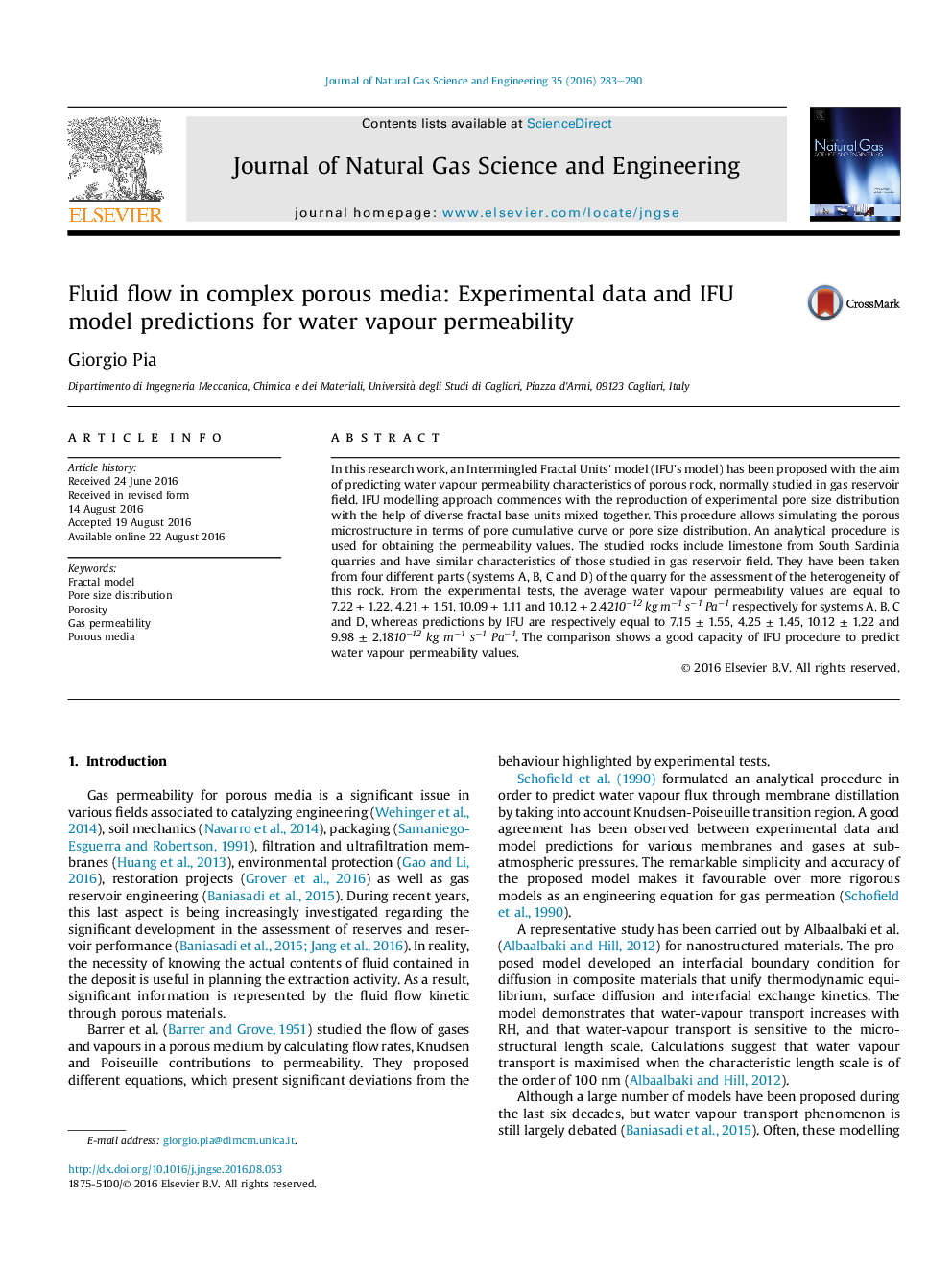| Article ID | Journal | Published Year | Pages | File Type |
|---|---|---|---|---|
| 1757022 | Journal of Natural Gas Science and Engineering | 2016 | 8 Pages |
•Gas permeability modelling for porous media is significant in engineering.•Experimental test are carried out on calcareous rocks.•An IFU model has been applied to reproduce porous microstructure.•An analytical formula has been proposed to predict fluid flow permeability.•Experimental data and model predictions are in agreement.
In this research work, an Intermingled Fractal Units' model (IFU's model) has been proposed with the aim of predicting water vapour permeability characteristics of porous rock, normally studied in gas reservoir field. IFU modelling approach commences with the reproduction of experimental pore size distribution with the help of diverse fractal base units mixed together. This procedure allows simulating the porous microstructure in terms of pore cumulative curve or pore size distribution. An analytical procedure is used for obtaining the permeability values. The studied rocks include limestone from South Sardinia quarries and have similar characteristics of those studied in gas reservoir field. They have been taken from four different parts (systems A, B, C and D) of the quarry for the assessment of the heterogeneity of this rock. From the experimental tests, the average water vapour permeability values are equal to 7.22 ± 1.22, 4.21 ± 1.51, 10.09 ± 1.11 and 10.12 ± 2.4210−12 kg m−1 s−1 Pa−1 respectively for systems A, B, C and D, whereas predictions by IFU are respectively equal to 7.15 ± 1.55, 4.25 ± 1.45, 10.12 ± 1.22 and 9.98 ± 2.1810−12 kg m−1 s−1 Pa−1. The comparison shows a good capacity of IFU procedure to predict water vapour permeability values.
Graphical abstractFigure optionsDownload full-size imageDownload high-quality image (210 K)Download as PowerPoint slide
